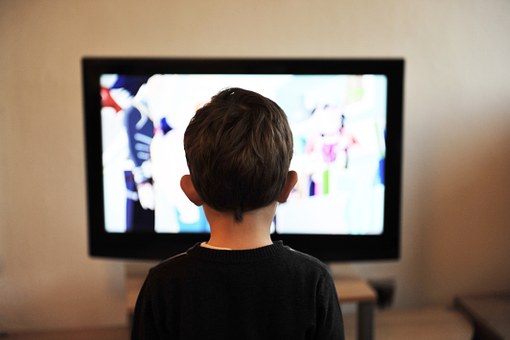Vacations are a great time to throw routine out the window and allow our children (and ourselves) to enjoy a few indulgences that aren’t part of the day-to-day schedule at home. One such indulgence is extra TV time, and boy were my eyes opened during our trip a couple of weeks ago.
Another reason to cut the cord
We cut the proverbial cord (got rid of traditional cable TV) a few years ago, so our primary sources of TV are Hulu and Netflix. Through these streaming services, commercials are few and far between – particularly during the shows that our son watches. The condo we rented, however, had the full suite of cable TV, and I was shocked at the number of ads during a 30-minute show.
They seemed to primarily be for either toys or supposedly healthy (i.e., sugary) cereal. After all, if the advertiser tells our son their cereal is part of a balanced breakfast, it can’t be bad for him, right?! Ads for dolls, backpacks, laser tag, and light-up shoes flashed on the screen one after another. Hell, they’ve even got gum now that you can stick together to form different flavor combinations, and some where you squeeze some sort of flavored gel in the middle. Why can’t we just bring Chewels back?
1 million
I’m reading a book right now called thanks!, and it’s all about how gratitude leads to a happier life. See, there’s a reason that “appreciate” was my first post! Anyway, this book cites a statistic that Americans are exposed to 1 million TV commercials by the age of 21. That’s 1 million messages telling us that we need more, that what we have isn’t good enough or fashionable enough any longer, that you’ll be completely abandoned by your friends if you don’t have a certain type of shoes, and other completely ludicrous messages in an attempt to sell more of whatever they’re pushing. And that’s just by the age of 21!
Given our limited exposure to ads, it took a couple of years before our son was old enough to pay attention to a commercial. I can still vividly remember the first time that he got completely mesmerized by an ad on TV. It was for a light-up shower head and corresponding light-up floating thingy for the bath. As happens with many parents, we caved and bought it for him. I think our reasoning was that it was near Christmas or something like that, so why not get it? Either way, not our finest moment as parents, but he still enjoys a disco-like experience each time he showers!
The reality is that most adults are not immune to the messaging delivered by advertisers either. Sadly, the underlying (and grossly misleading) theme in advertising is that happiness is found in “stuff.” The more we have, the happier we’ll be, supposedly. Isn’t it amazing how our furniture or car, that was perfect for us yesterday, is no longer sufficient after we see a commercial for something different than what we already have?
Advertising is one of two main things (the other being social media) that keep us from appreciating what we have, so don’t fall victim to their messages!
What’s a parent to do?
Parents can play an integral role in helping our young ones digest the commercials they’re seeing on TV (or anywhere else ads get their attention). If your children comment that they want, or worse – “need,” something they see advertised, engage in a dialogue with them to better understand why. Having a conversation with them can be an opportunity for you to teach them how to separate wants from needs, and to talk about how much these items actually cost.
Speaking of cost, if you haven’t yet begun to educate your children on how to responsibly manage the money they earn or receive, now is the perfect time to start. Not only will this help them in the future, but it gives you a way out when your kids come to you to buy all this great stuff they’re seeing on TV!
Furthermore, it’s okay to let kids spend their money and make mistakes now when they realize the happiness of the new purchase wears off quickly. The stakes of blowing through money are much lower when we’re younger. Maybe then they’ll be less influenced by ads for more expensive things (cars!) when they’re older!
A few more things to consider
According to this article, the Unites States has 3.1% of the world’s children, but consumes 40% of the world’s toys. If that’s not alarming, then I’m not sure what is.
What shouldn’t be lost on us either is the environmental impact of buying all the things shown in these commercials. The problem with buying things (and this applies to both children and adults) is that our happiness with the new purchase diminishes not long after the purchase. The “new and improved” thing becomes the new norm, and we remain vulnerable to subsequent ads or commercials.
The reality is that we don’t keep these purchases forever, so all this stuff is going to end up in a landfill or somewhere in the environment. When your child is about to discard one of these things they just “had to have,” ask them if they even remember how much they spent for it. Better yet, have them donate it to someone less fortunate instead.
Beware of your children’s exposure to TV commercials; your wallet, and the environment, will thank you.


